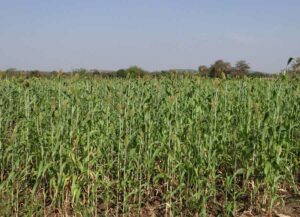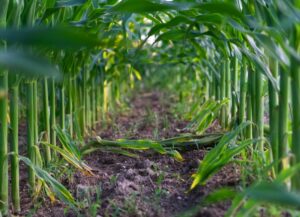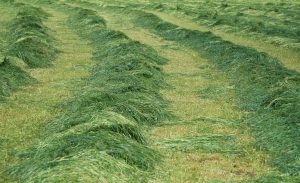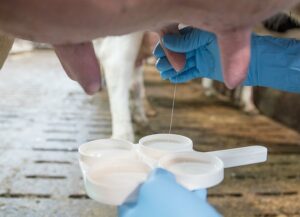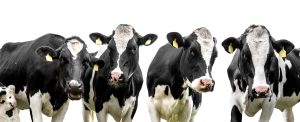Nuria Garcia
In the weeks leading up to calving, dairy cows should consistently eat a balanced diet with the goal of improving dry matter intake (DMI) and metabolic health post-partum.
Cows can have regular intake at the end of their gestation by offering them diets with adequate energy, including feeds with low nutrient density (e.g. wheat straw). These diets are designed to encourage ad libitum intake, while controlling energy uptake so that cows do not gain excessive body condition during the dry period.
Reducing straw particle size in high-straw dry cow diets has recently been shown to improve intake and promote ruminal and metabolic health post-calving. Although straw of smaller particle size reduces food selective behavior in the bunk, it does not however eliminate it altogether, speculating there are other diet-related factors that affect this selection.
Dry-cow diets with limited energy contain in general higher concentrations of dry fodder and therefore lower moisture content than lactation diets. The addition of water to low-moisture rations of cows in lactation has some beneficial effects, such as reducing feed sorting and inducing higher fat and protein contents in milk.
However, the effect of adding water to dry cow diets high straw has not been previously studied. The objective of an experiment, published in the Journal of Dairy Science this past February (Havekes et al., 2020), was to determine the effects of adding water to a high-straw dry-cow diet on feeding behavior, health and production of cows post-calving.
The experiment was conducted at the University of Guelph (Canada), where 40 second or more lactations cows were fed 45 days before expected calving a basal diet consisting of a total mixed ration (TMR) with high wheat straw (36 % DM), corn silage (41% DM) and pelleted concentrate (23 % DM). They were divided in two treatments:
- No water added (DM = 53.4%)
- Water added to reduce DM by 10 percentage points (DM = 45.4%).
The diet was formulated to contain 11.6% protein, 1.35 Mcal/kg NEL; after calving, all cows were fed the same lactation TMR (45.2% DM, 14.9 % CP, and 1.68 Mcal/kg NEL) for 28 days.
Dry matter intake, feeding behavior, and ruminal activity were recorded automatically. Fresh TMR and orts were collected twice a week to determine feed selection preference. A particle separator was used to separate feed samples into four fractions: long (>19 mm), medium (<19 to >8 mm), short (<8 to >4 mm) and small (<4 mm) particles. Feed selection was calculated from the actual intake of each particle fraction expressed as a percentage of the expected intake.
Cows fed the water added diet had higher DMI
The results showed that cows fed the water added diet had higher DMI during the dry period than cows with no water added, ruminal activity however did not differ between both groups.
Dry matter intake and feeding behavior post-calving were not affected by the dietary treatment received during the dry period. Cows in the water-added diets experienced a slower daily ruminal pH decrease during the first 7 days of lactation.
No differences in body condition score, weight gains or milk production and composition were detected between cows in both groups.
Therefore, the increase in moisture content of the dry cow ration with high straw content, improved intake during the dry period, resulting from lower feed selection, and maintaining intake constant during the week pre-calving.
During the first week post-calving, cows previously fed the diet with more moisture had better and more stable reticulum-ruminal pH. In general, these results show that decreasing DM content of a high-straw dry-period diet had positive effects on intake and feeding behavior during the dry period as well as post-calving ruminal health.
Reference
Havekes CD, Duffield TF, Carpenter AJ and DeVries TJ. Moisture content of high-straw dry cow diets affects intake, health, and performance of transition dairy cows. J. Dairy Sci. 103:1500–1515.
© 2020 Dairy Knowledge Center. All Rights Reserved.



